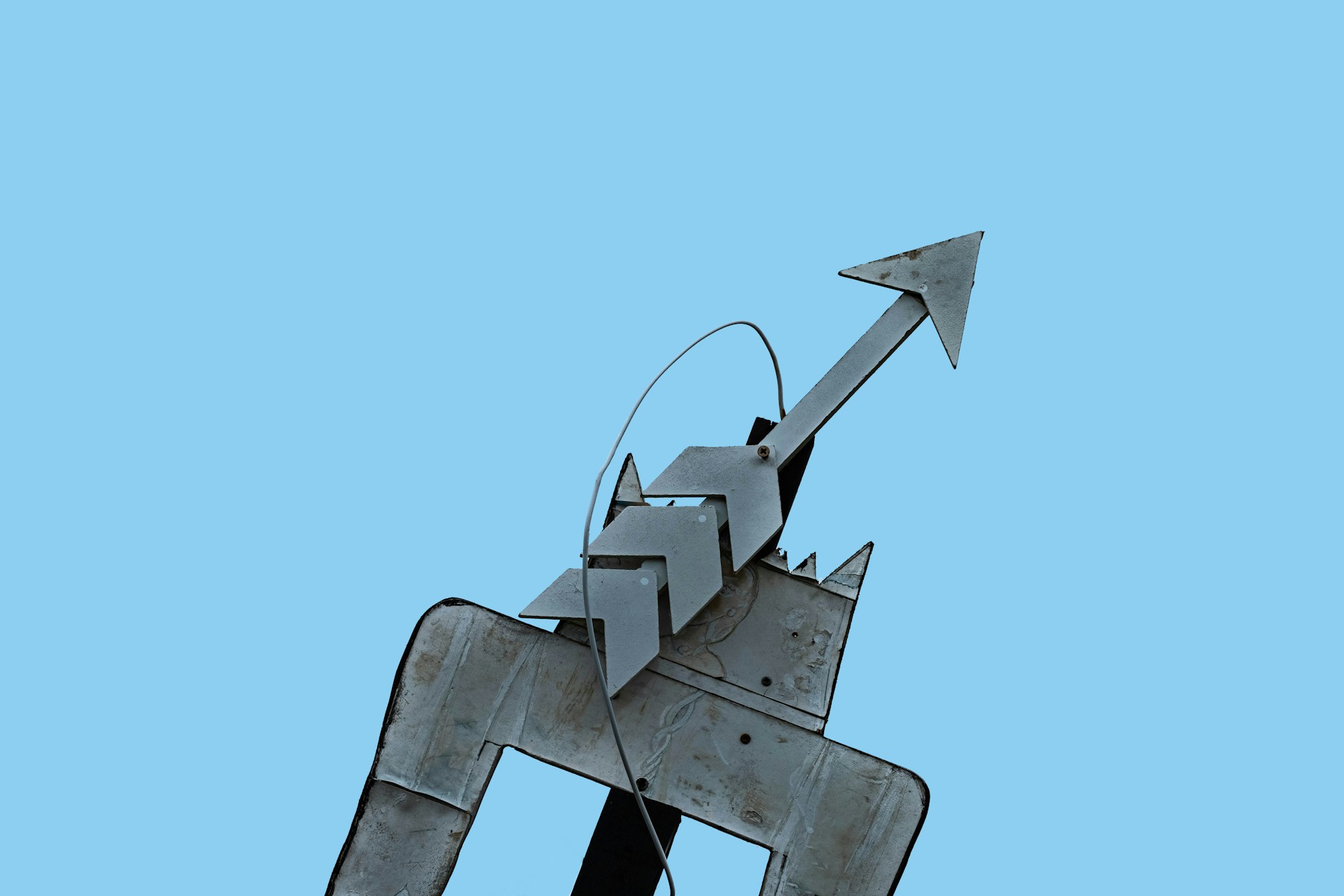Vague? No. Ungraspable? Yes.
According to Elizabeth Mattis Namgyel, the "Heart Sutra," the best-known text of the Mahayana wisdom tradition, unfolds as a most unusual conversation that leads us to what lies beyond our concepts. The post Vague? No. Ungraspable? Yes. appeared first...

According to Elizabeth Mattis Namgyel, the Heart Sutra, the best-known text of the Mahayana wisdom tradition, unfolds as a most unusual conversation that leads us to what lies beyond our concepts.

“From a Dust Particle to the Universe,” 2021. Rice paper installation, 245x198cm. By Charwei Tsai.
Atop Vulture Peak Mountain in Northern India, we find the Buddha assembled with countless earthly and celestial followers. The purpose of this gathering?
The Heart Sutra!
An essential distillation of the profound Prajnaparamita teachings, the opening of the sutra draws us into this ancient scenario. The Buddha exudes the energy of wakefulness and compassion, described in the sutra as profound illumination. Although he sits in silence throughout most of the teaching, there is not a single atom of his body or moment of his awareness that is not imbued with living, breathing wisdom. His silence signifies that wakefulness cannot be captured in words, that the true nature of all things bursts from the seams of our ideas. The Heart Sutra enables us to contemplate and ultimately understand the vastness of the Buddha’s mind.
From within the embrace of the Buddha’s profound silence, the venerable monk Shariputra boldly asks a question:
How should a son or daughter of noble family train, who wishes to practice the profound Prajnaparamita?
Shariputra’s question ignites a compassionate response from the bodhisattva Avalokitesvara, also present at this sacred gathering. Avalokitesvara’s reply illuminates the power of words, by conveying vital information beings require to awaken.
What Words Can Do
When we use words with thoughtful precision, they express so much majesty. They give our minds stability, clarity, and direction. The scriptural teachings of the dharma, by design, have the potential to come alive in us. When we directly encounter a distinct, unmistakable experience of the teachings we have studied, confidence dawns in our being. Language helps direct the way we respond to life. When we accurately identify something that urgently needs addressing, such as danger or abuse, naming it mobilizes us into action.
We can’t cling to the meaning of emptiness or ultimately capture it in words. It’s like someone who can’t speak, overcome by the profound sweetness of sugar.
Even in the most ordinary way, language can be exacting in its purpose: When we ask someone for a screwdriver, they know what we mean. They won’t hand us a wrench. Take a moment to recognize how amazing that is. Words ground us in our quest for meaning and give us avenues for communication with others. As a lover of words, I want to pay tribute to this shimmering apparition we call language.
I use the term “shimmer” because language is alive with us and can pull us out of vagueness into the vibrancy of our immediate experience.
I refer to language as an “apparition” because by stringing together arbitrary sounds we have created “words,” and we use these words as names to designate and identify objects, or associate them with certain feelings or experiences. Language works because we collectively agree that things mean what they sound. Looking at language as an apparition may challenge us. We may ask, “How can language be an apparition when it functions with such accuracy?” But do things have to be real to function?
I don’t think so.
Approximations
Once, Grover, from Sesame Street, wanted to talk about the words here and there. He started out at a location he called here. Then he ran toward the place he projected as there.
But…
When he got there, he realized it was just another here. He ran breathlessly back and forth trying to find there but somehow never managed to reach his destination. Nevertheless, just because Grover couldn’t find a there there, doesn’t mean we can’t use the here or there in a functional way. Let’s pretend, for example, I wanted to tell you a secret. If you were across the room, I would ask you to come here. You would have to leave your here and walk toward me.
Once you were close enough, we would each have our own approximation of here. Your here might be a little closer or farther than the here I had in mind. And you could never really occupy my here because that space would already have been taken up by me, but you would find your own here, and somehow, in the end, it would all shake out without a fuss, or even a thought. I would tell you the secret, you might be surprised, we might laugh, and that would be that.
So, though we can’t truly find a there there, or a here here, that doesn’t negate the power or function of the designations here or there.
Just like here and there, all words are approximations of the object field they represent. So naturally, the dynamics of life will push at the boundaries of our designations. For instance, when sunlight touches the surface of the water, it sparkles. We can’t exactly catch or locate the moving points of light, but that doesn’t mean its appearance is ambiguous. We can still identify light. There is nothing dubious about its vibrant, dancing expression. Words gesture toward experiences, but like maps, they don’t resemble the actual terrain they represent.
Fresh Insight
Sometimes, something new seems to appear in our perception of an object that makes us question its nature. It’s as if the object of our attention throws us a hint that it may not be exactly as we think it is. We might see a completely new side of a friend we have known for a lifetime that might touch, concern, or inspire us. This opens our capacity to perceive our friend in a fresh way.
Such insights are really exciting, especially if we have an inclination for going beyond how we usually see things. Both the idea and the experience of going beyond have a lot to do with the meaning of Prajnaparamita.
But it’s important to remember that although life resists definition, words have tremendous power. What would happen if the meaning of the sounds we call words meant absolutely anything? What if the meaning were arbitrary? How would we communicate with others, or navigate our life together in a healthy way? If we get a little sloppy around language or keep things vague, language will lose its integrity.
Upholding the power and majesty of words falls on all of us. We don’t have to become verbose; we just have to respect the power and function of language.
Prajna…para…mita
In order to walk the territory of our topic, we must identify our guest of honor by name: Prajnaparamita—a Sanskrit term that scholars commonly translate as Transcendent Wisdom and is treated as a female embodiment, so I will refer to prajnaparamita as “her” (more on that later). The term prajna means discernment or intelligence. The ability to discern or know is a natural feature of our mind. It refers to our capacity to intuit, read patterns, and evaluate, for instance, whether an action will bring benefit or harm.
The second part of her name, paramita, commonly translated as “perfection,” has two etymologies. The term parama means “highest” or “most excellent.” For this reason, Prajnaparamita is also often translated as the Perfection of Wisdom. “Perfect” here has nothing to do with the realm of our preferences—such as perfect vs imperfect. “Perfection” here refers to a matured mind’s ability to bear witness to all aspects of life—without shutting down, without hope and fear, or without belief and doubt.
Another creative etymology divides paramita into para and mita, with para meaning “beyond” or “the further bank, shore, or boundary” referring to the complete awakening of the Buddha. Therefore, paramita often translates as “that which has gone beyond,” or “has transcended” clinging to coarse and subtle concepts or beliefs.
Language is an apparition. By stringing together arbitrary sounds we have created words. The words become names to designate objects or feelings or experiences. It may surprise us that this apparition serves a function, but things don’t have to be real to function.
To define Prajnaparamita at all may strike you as a contradiction. You might wonder: “Why identify transcendent wisdom as the insight that goes beyond ordinary conceptual boundaries, if her very nature can’t be captured in words?” We may simply feel satisfied with the translation, transcendent wisdom. We might think: “Ah, beyond concept! Why dig further?” We may prefer to keep our spirituality a little vague. But let’s not do that!
Recall that the Buddha, as described in the Heart Sutra, sat in the state of profound illumination—beyond concept. “To illuminate” means to make something understandable or clear. Just because something is ineffable doesn’t imply that it’s vague or ambiguous.
Furthermore, the sutra narrates that from within the embrace of the Buddha’s profound silence, Avalokitesvara describes the nature of reality in sounds and words, which again brings us out of not knowing into a distinct, unmistakable experience of clear seeing. The words of the Heart Sutra guide us to a knowing that’s beyond words.
Since we began our inquiry, we have identified our topic of investigation—the Sanskrit word Prajnaparamita—and chosen an accurate translation: Transcendent Wisdom. We further broke down the Sanskrit name into syllables, which yielded an ever-more nuanced understanding. We have begun to establish a basic frame of reference for her. Everything we have considered so far has been grounded in the precision of Buddhist scholarship and practice.
There is nothing vague about Prajnaparamita. So why keep her shrouded in mystery? She doesn’t try to hide from us! In fact, the whole point of studying her is to understand our own nature.
Open Question
Let’s go a bit deeper into understanding Prajnaparamita. What are her qualities and function? I would like to offer a working description of her as: The mind poised for insight into the empty nature of all things.
This description gives us a lot of information.
First, it establishes Prajnaparamita as an awareness—a fancy way of referring to the nature of knowing. The quality of her knowing is not a confused or neutral kind of knowing, or the discernment that perceives or labels objects. Hers is a knowing “poised” for insight. She bends toward it. She is ripe for understanding—awake.
I have often used the phrase open question to describe the quality of awareness that bends toward insight. When we ask an open question, the mind has not shut down around a conclusion, and yet it engages the nature of its object—which releases all kinds of information so we can read patterns and connect dots. There really isn’t a limit to what we can know about any given thing. The world keeps changing and our mind changes with it.
An open question can bear the fullness of the field of its object, without making it a thing. We all know the expression don’t make it a thing. Perhaps we can use this expression to understand something.
POP!
When my son was a toddler, I used to take him to an outdoor promenade to climb rocks and play with other children. A character we used to call “the balloon man” stationed himself at the edge of the scene, where he had a lucrative business selling balloons that he twisted into hats, swords, and animals. My son always chose a sword-shaped balloon and would have imaginary jousts with rocks and prickly bushes.
On every occasion, at the time of the inevitable “POP!” I began to take note of a curious phenomenon—a pause—pregnant with possibility. During this moment, I would wait in anticipation for which direction my son would take:
Would he recognize the irony of going through this again and again?
Or
Would he enjoy the pop and have a good laugh? (Which was a delight when it happened.)
Or
Would he make it a thing? (Get upset, in other words.)
Making it a thing seemed to take place in slow motion: There’s the initial POP, followed by a moment of silence, then a series of shifting facial expressions that indicated my son had yet to decide what he felt about it all. Soon the welling up of disappointment became evident with tears, and the story would start to congeal. I would watch the collapse of all other possible responses, into an undeniable blast of disappointment.
I’m trying to be less threatening by talking about kids here, but this continues into adulthood and our own metaphorical popped balloons. What would it take to laugh or delight in the infinite potential of a situation, or to respond to a challenging circumstance without panicking or closing our hearts? What if we had the wherewithal to bear the rich energy of a situation without narrowing the field of our objects? Would we have more access to the clarity of our minds and our ability to respond with creativity?
Not making something a thing has to do with the mind poised for insight—our ability to bear the open dimensionality of life.
The term emptiness has something to do with the fact that life as we encounter it is too lively for the likes of our ideas. Emptiness always refers to the nature of the object. The object of our awareness is always free or empty of the “thingness” we assign it.
To understand this is the function of Prajnaparamita. She is the subject and emptiness is her object.
Mother
Naturally, you may be wondering, “Hey, what’s up with the feminine pronoun?” Why ascribe a gender to Prajnaparamita?
In the scriptures, Prajnaparamita is referred to as the mother of the Buddhas. Tibetans affectionately call her Yum Chenmo—Great Mother. This term derives from Prajnaparamita scriptures that describe her as “The mother of the four noble offspring: the Sravakas, Pratyekabuddhas, Bodhisattvas, and Buddhas.” These four stages of awakening are born from the recognition of the nature of emptiness. The idea of being born from gives us that feminine
reference.
As quoted in The Garland of Eloquence by Tsongkapa:
The greatness of Her power is to be marveled at,
since she establishes every living being as Buddha.
Through learning her names and designations and through having an experience of her, we poise ourselves to awaken to her ultimate meaning, which is free of limiting characteristics, such as gender.
So please don’t try to make Her Ladyship a thing. Otherwise, you’ll never truly meet her. She is simply much too
lively for the likes of our designations.
When I think of the scene on Vulture Peak Mountain, the Buddha sitting in profound silence, it reminds me that the experience of emptiness is ineffable—beyond words. That we can’t cling to the meaning of emptiness or ultimately capture it in words is analogous to someone who can’t speak, overcome by the profound sweetness of sugar. The longing to communicate can never be consummated. It’s sort of romantic.
In moments of awe or deep appreciation, ordinary mind ceases. Because all things are empty by nature, we are bound to experience the ineffable truth of things, here and there—even just by default. But to reinforce the point made earlier:
Just because something is ineffable, which all things are, doesn’t imply that they are vague or ambiguous.
When Avalokitesvara spoke from within the silent embrace of the Buddha, he expressed, with eloquence and majesty,
that all things are empty by nature. This was not a vague or ambiguous experience for Avalokitesvara. The meaning of each and every word of the Heart Sutra requires deep study and practice to understand. Thousands upon thousands of commentaries, including many by teachers at Nalanda, have been written to clarify the teachings of the Prajnaparamita sutras. We can be so grateful that they provide us with a map so that we can walk her territory, which ultimately leads to her ineffable nature.

 ValVades
ValVades 






























